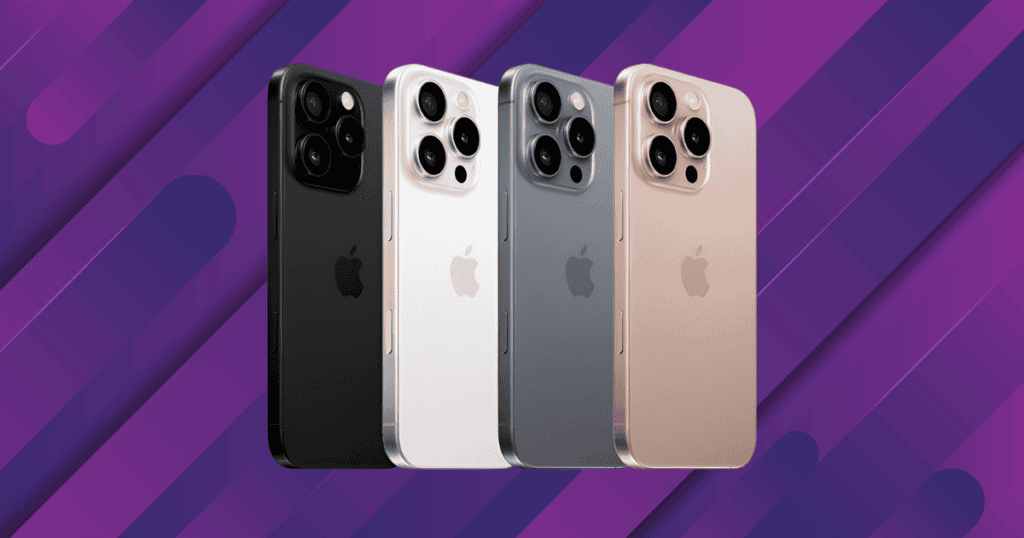The rumored price drop of the iPhone 16 Pro to $999 in the U.S. is sparking discussions about Apple’s long-term pricing strategy and its broader effects on consumer behavior. This price point has been a staple since the launch of the iPhone X, reinforcing a sense of familiarity and trust among Apple’s loyal customer base. At the same time, it sends a clear message to competitors like Samsung and Google, signaling Apple’s intention to maintain its strong foothold in the premium smartphone market. But how will this influence Apple’s market positioning and feature innovations? The interplay of these factors could redefine consumer expectations and shape industry standards in the coming months.
Price Stability Impact
Apple’s decision to keep the iPhone 16 Pro at a starting price of $999 is likely to have far-reaching effects on consumer behavior and brand perception.
- Consistency since 2017: The price stability, maintained since the launch of the iPhone X, fosters consumer trust and strengthens brand loyalty.
- Appealing to a wide audience: By keeping the price at a familiar level, Apple not only attracts its loyal customers but also makes its premium offerings more accessible to new buyers.
- Inflation-adjusted value: In today’s environment of rising costs, a price of $999 feels even more appealing, offering perceived value compared to pricier competitors.
Ultimately, this strategic pricing approach allows Apple to maintain its premium status, giving it a competitive edge while minimizing consumer concerns about affordability.
Comparison to Previous Models
- iPhone 16 Pro vs. iPhone 15 Pro: While the iPhone 15 Pro was priced at $869, the iPhone 16 Pro retains the $999 entry price, a move that reinforces Apple’s premium branding established with the iPhone X.
- Pro Max comparison: With the iPhone 15 Pro Max starting at $1,029.95, the iPhone 16 Pro provides a competitive, lower-cost alternative while still offering advanced features like telephoto hardware and a 6.3-inch display.
- Focus on AI and performance: Despite few drastic specification changes, the iPhone 16 Pro improves AI integration and boosts processing power with the A18 chip, maintaining its appeal.
Consumer Reactions and Expectations
Consumers have reacted positively to the retention of the $999 price point, viewing it as a favorable shift in Apple’s pricing strategy.
- Positive reactions: The decision to stick with $999 rather than introduce a four-digit price increase has been met with relief.
- Split perspectives: While some consumers prioritize the latest high-end features, others emphasize the importance of affordability and overall value.
- Historical context: Maintaining this price since 2017 has set expectations, fostering continued brand loyalty.
However, not all feedback is positive. Some skeptical consumers question whether high smartphone prices are justified, especially in an era of economic pressure. This ongoing debate around cost versus features will likely continue to influence future buying decisions.
New Features of the iPhone 16 Pro
The iPhone 16 Pro offers several exciting new features that enhance its value proposition:
- Upgraded camera system: Improved photography and videography capabilities for high-quality content creation.
- Larger display: A 6.3-inch screen with slimmer bezels provides an immersive viewing experience.
- Action Button: A customizable button allows users to personalize their phone functions.
- Battery life: A 10% increase in battery capacity ensures longer usage between charges.
These advanced features, combined with the rumored $999 price point, make the iPhone 16 Pro highly competitive in the premium smartphone market.
Market Positioning Strategy
Apple’s pricing decision places the iPhone 16 Pro firmly in the premium smartphone segment. By maintaining the $999 price, Apple continues to offer high-quality devices without substantial price hikes, a strategy that aligns with consumer expectations.
| Feature | iPhone 16 Pro | Competitor A |
|---|---|---|
| Entry Price | $999 | $1,099 |
| Camera Quality | High | Medium |
| Brand Loyalty | Strong | Moderate |
| Market Perception | Premium | Value-oriented |
Competitor Pricing Analysis
Apple’s decision to maintain the $999 entry price puts it in a strong position relative to competitors:
- Samsung Galaxy S23 Ultra: Priced at $1,199, Samsung’s flagship phone is significantly more expensive, making Apple’s offering more attractive to value-conscious consumers.
- Google Pixel 8 Pro: With a starting price also at $999, Google’s premium device increases competitive tension, but Apple’s brand loyalty may give it an edge.
This price stability enhances the iPhone 16 Pro’s value in a rising tech market, solidifying Apple’s dominance in a highly competitive landscape.
Future Predictions for Apple
Analysts predict that the iPhone 16 Pro’s pricing strategy will reinforce Apple’s market leadership and shape future product releases. Key features like the A18 chip and AI integration could drive consumer interest and prompt a new cycle of device upgrades.
- Flexible financing options: Apple’s focus on making its products more accessible could attract more consumers, influencing future market dynamics.
- AI integration: Future devices are expected to include even more advanced AI capabilities, redefining user experiences and setting industry standards.
MacReview Verdict
The iPhone 16 Pro, with its consistent $999 price, stands as a beacon of stability in a volatile market. While competitors adjust prices, Apple remains committed to a strategy of innovation balanced by pricing consistency. In a world where consumer prices fluctuate, Apple’s approach proves that sometimes, consistency is the best innovation.




